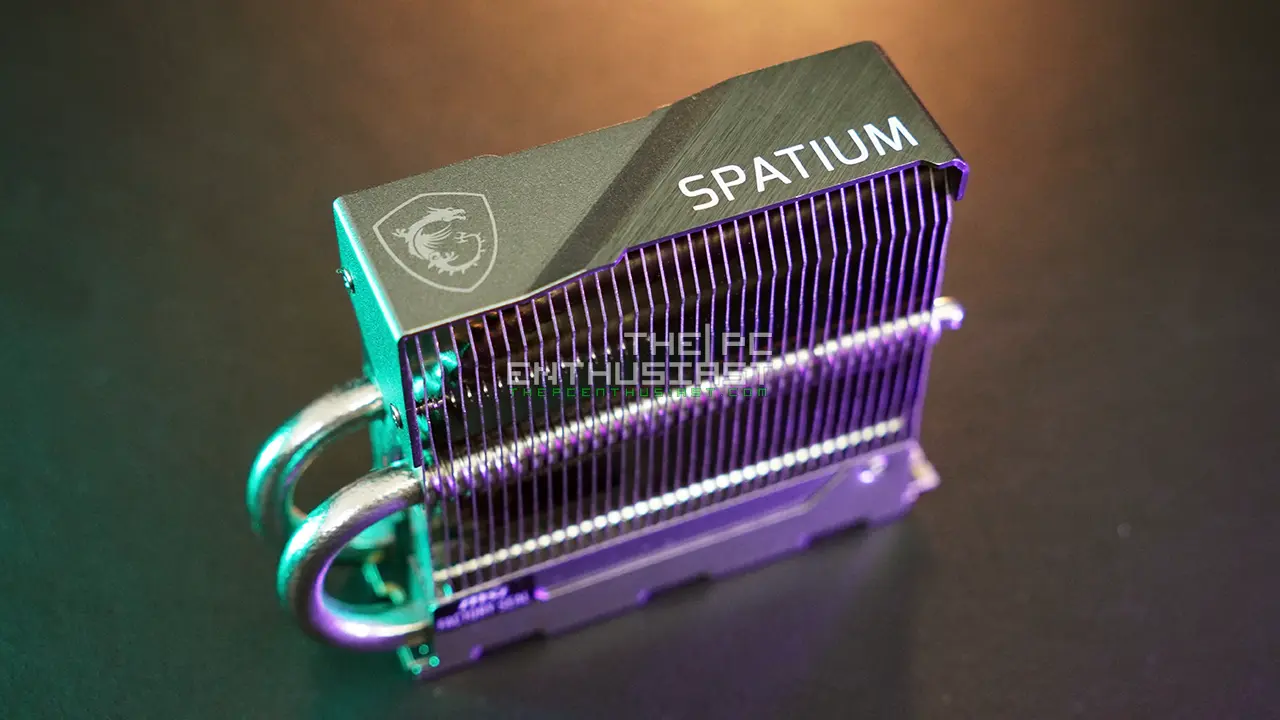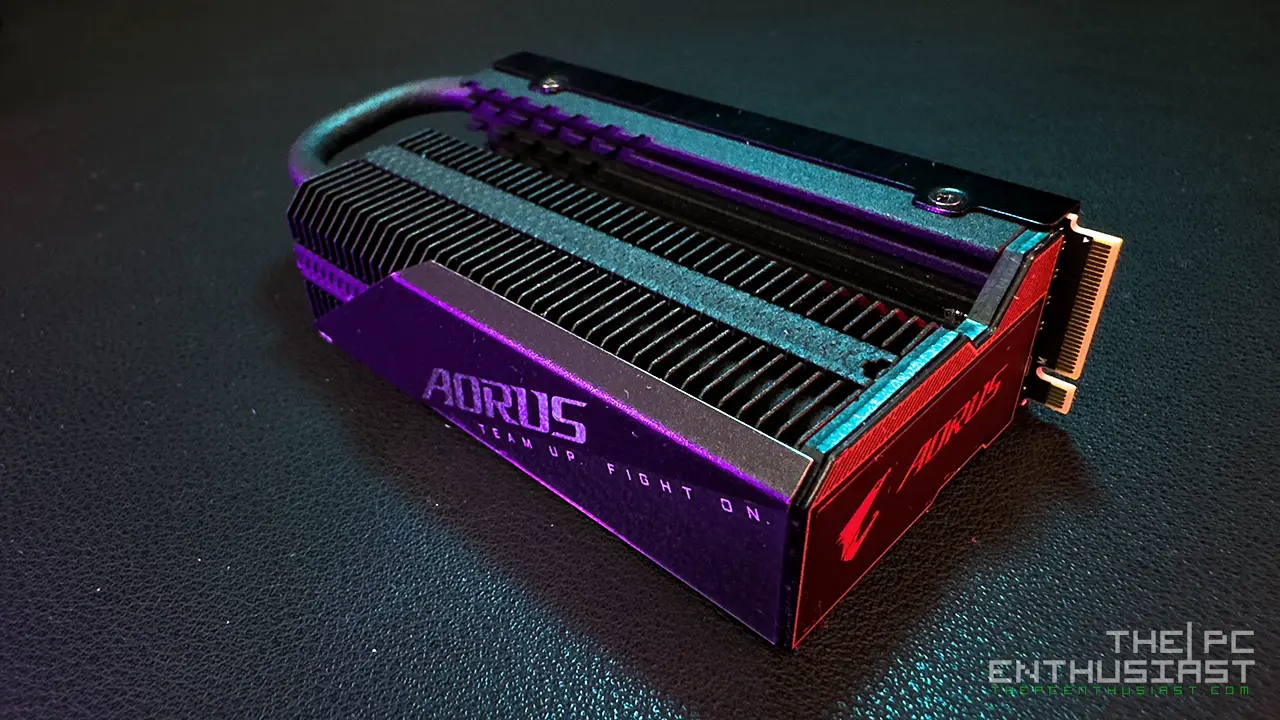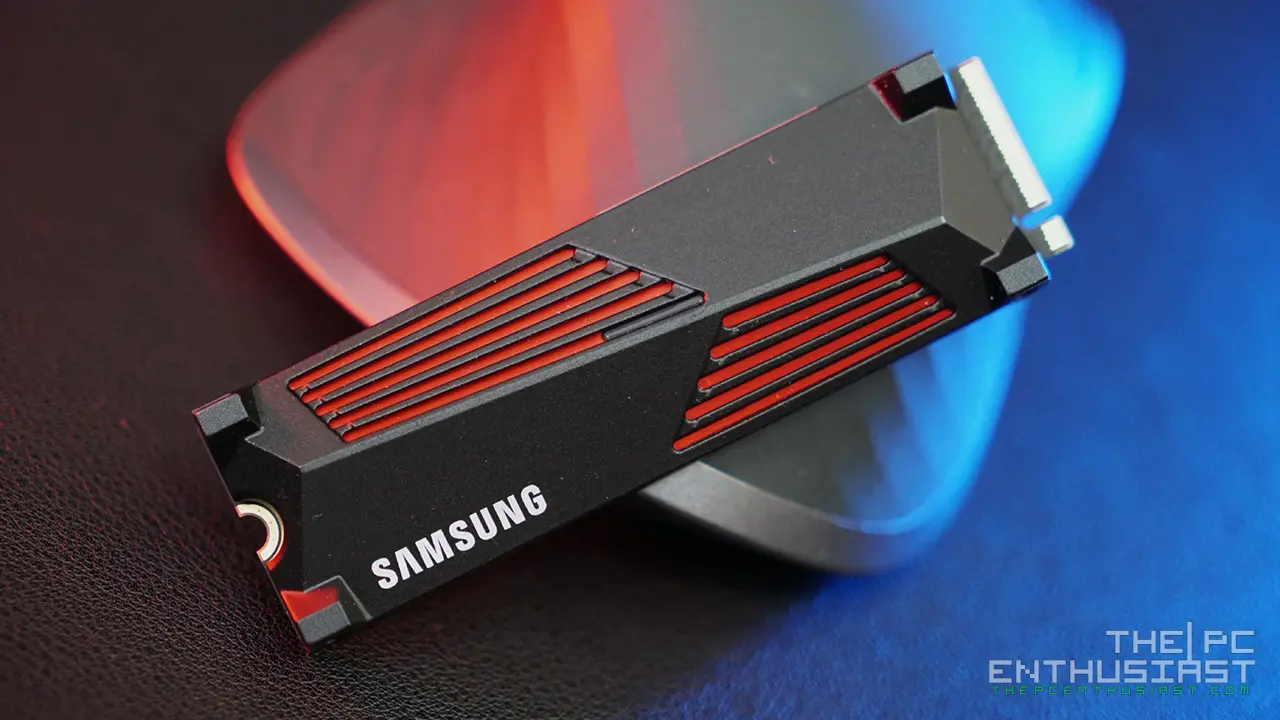MSI entered the SSD market in Q3 last year, and we were able to test the Spatium M480 and M470 NVMe SSDs. The Spatium M480 is the company’s flagship SSD, and it was one of the fastest. However, the M480 with heatsink was designed for PC applications only, since its heatsink was quite big. Many SSD manufacturers were already targetting the PS5 market since last year. And MSI doesn’t have anything on the table for the PS5 gamers. Enter the MSI Spatium M480 Play. Today, we’ll be checking out this new SSD that is designed not only for PC but for PS5 as well. Find out how the Spatium M480 Play performs in our review below. Spoiler alert! It is fast!
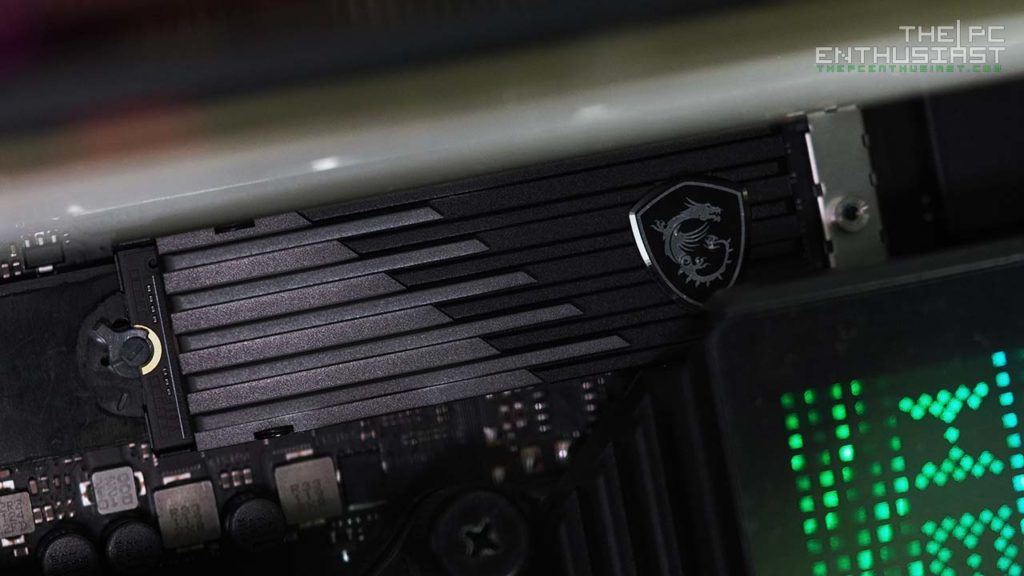
Update: Finally, the MSI M480 Play SSD is now available in the US. Links to where to buy added in the article.
MSI Spatium M480 PCIe 4.0 NVMe M.2 PLAY 2TB SSD Review
PC owners are not the only one who needs a fast SSD for their PC or gaming system. With the release of the PlayStation 5, PS5 owners also need a fast Gen4 NVMe SSD to expand the storage capacity of their PS5. If I am not mistaken, Samsung is the first to provide an SSD that meets the PS5’s minimum requirement with their Samsung 980 PRO with heatsink. The Spatium M480 Play is MSI’s fast storage solution, not only for PC gamers but for PS5 as well.
The MSI Spatium M480 Play is similar to its predecessor the M480. But its heatsink is designed to fit inside the PS5. It’s also using the Phison E18 controller but MSI has upgraded the NAND flash chips. With a faster NAND flash, the M480 Play is able to achieve a sequential read speed of up to 7,000MB/s and a sequential write speed of up to 6,800MB/s.
A Closer Look
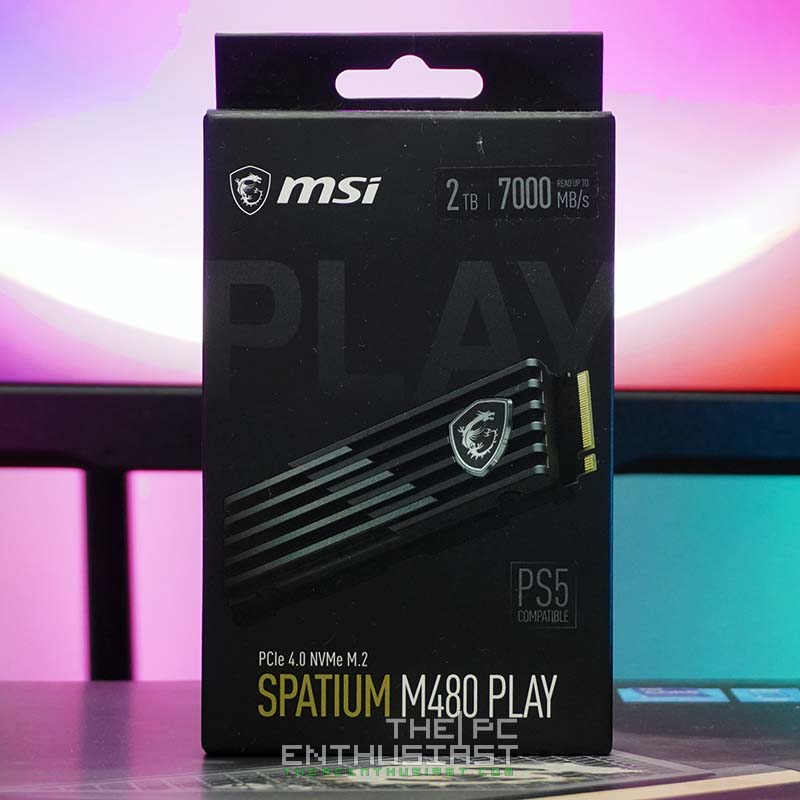
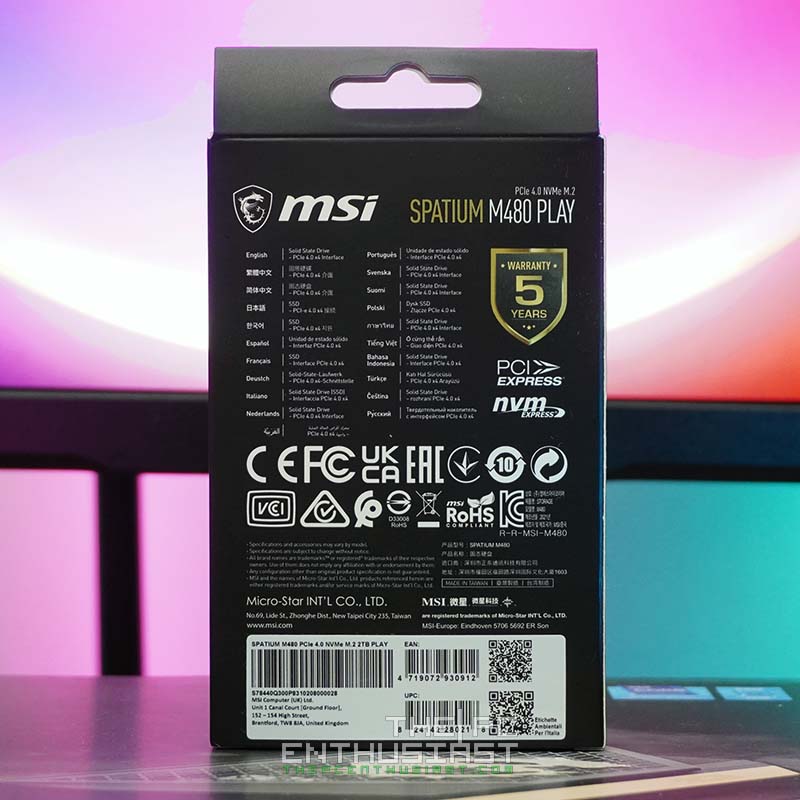
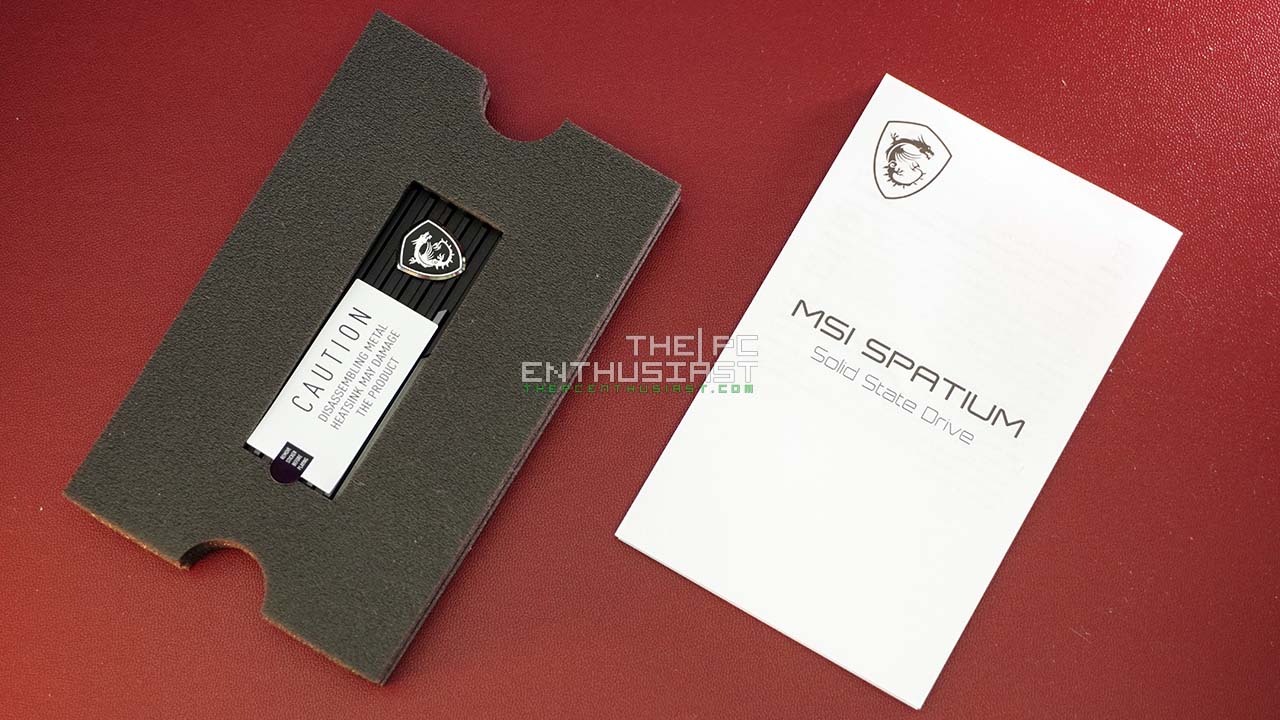
The Spatium M480 Play came with a small box, similar to the Spatium M480 with heatsink variant we reviewed before. However, the box is simpler and the heatsink is already pre-installed right out of the box. As you can see, there is a caution sign saying that the SSD may get damaged if the heatsink is disassembled or removed. Clearly, this product is intended to be used as-is. If you need an SSD without a heatsink, better get an SSD without a heatsink instead.
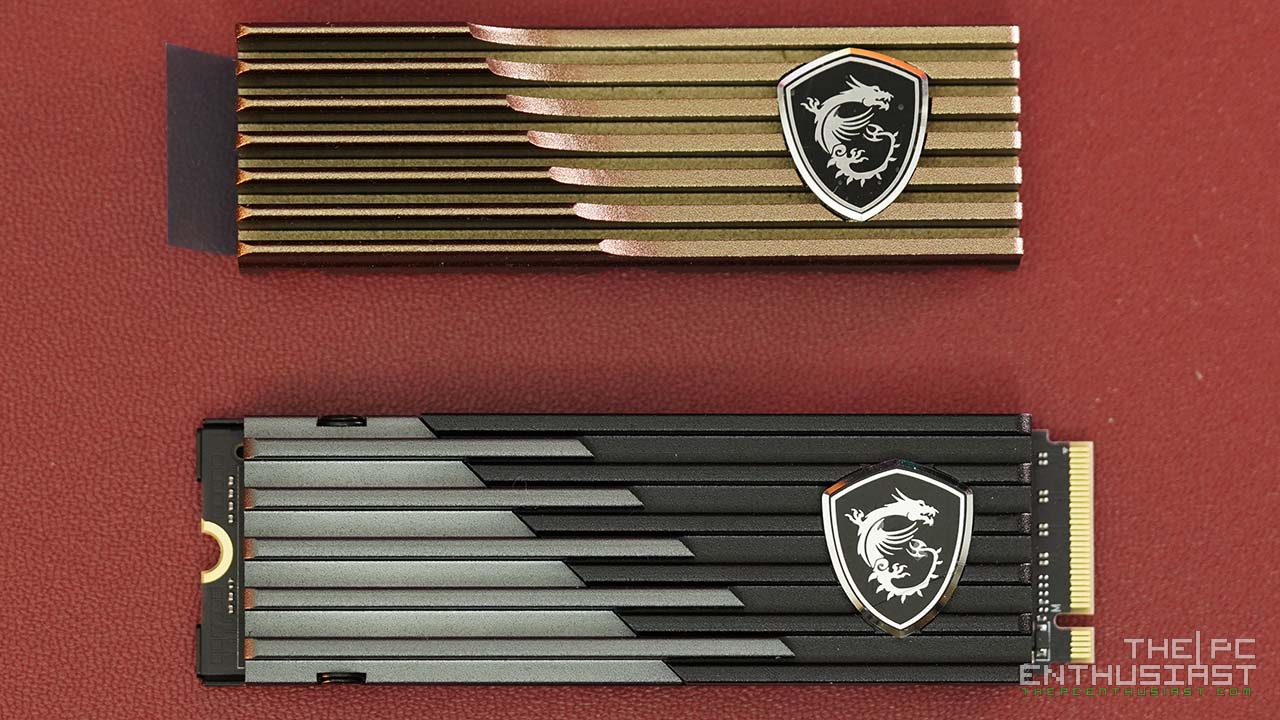
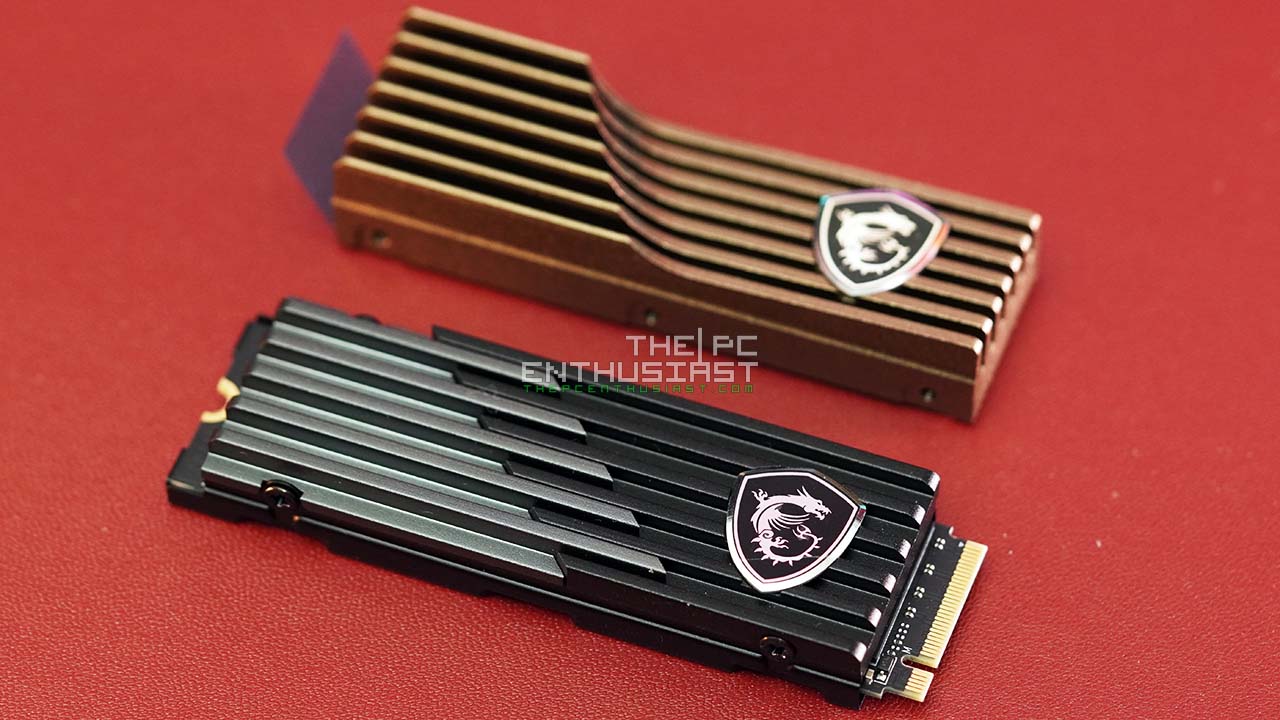
Above you can see the difference between the heatsink of the first M480 and the new M480 Play. MSI changed the color and the dimensions of the heatsink are different as well. After all, the M480 Play is designed to be compatible with the PS5. I like the looks of the golden heatsink of the M480. But the heatsink of the M480 Play looks nice as well.
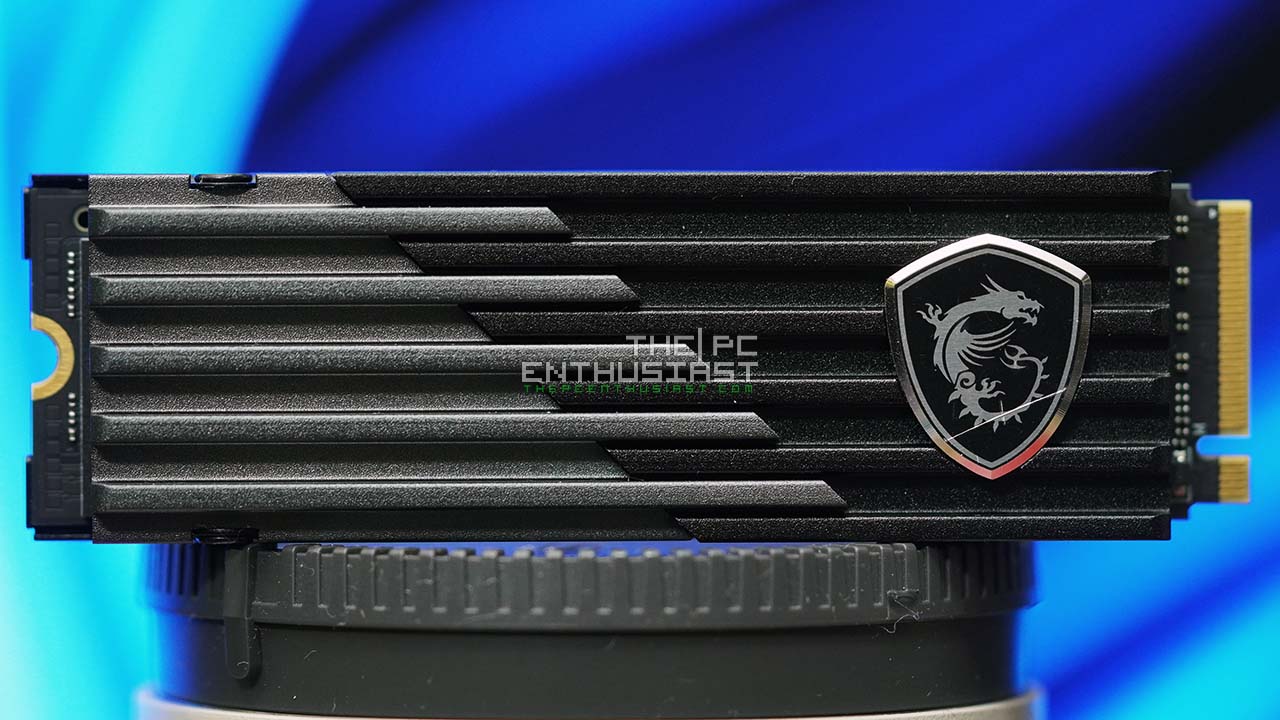
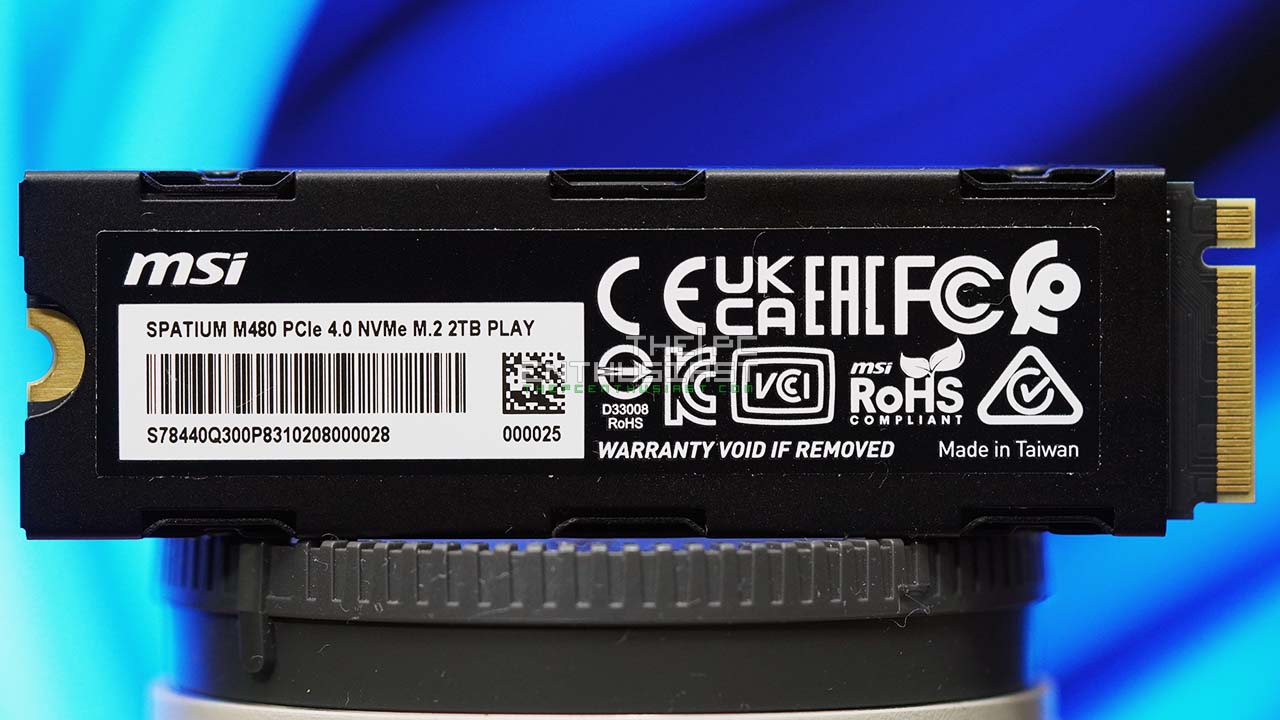
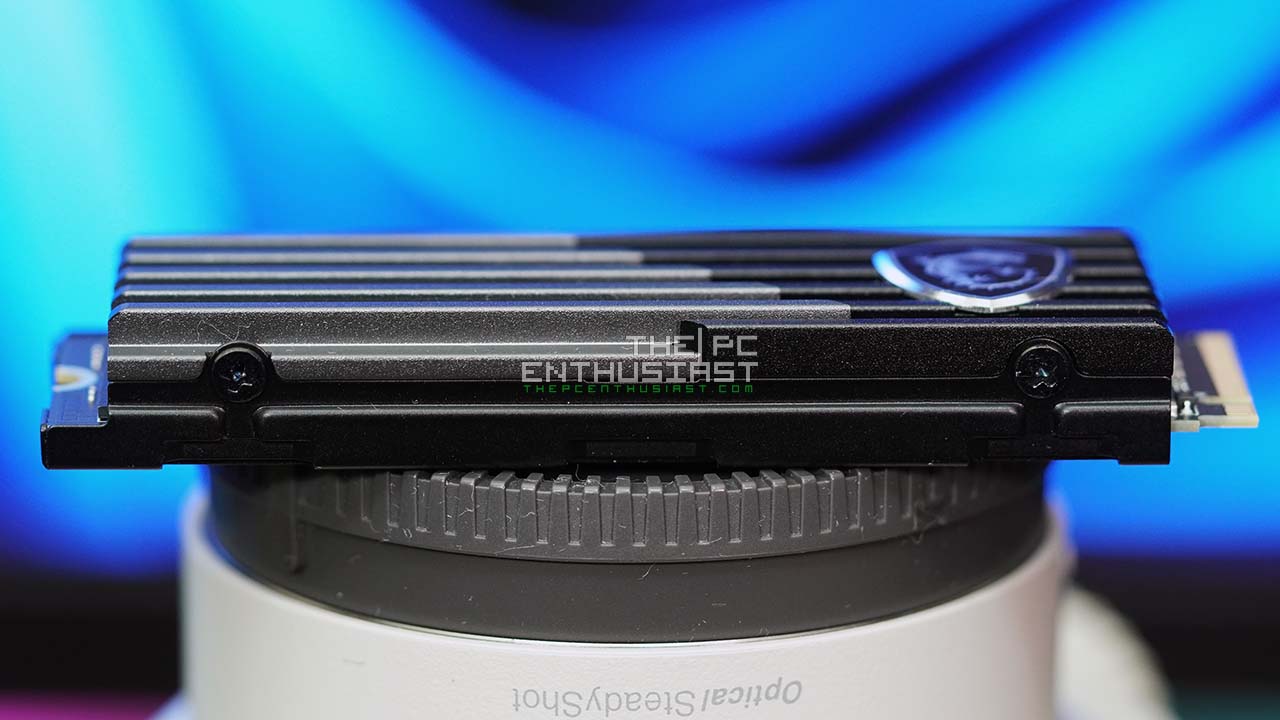
Here are the top-front and bottom views of the M480 Play. There are 4 screws, two on each side, that secure the heatsink. Even if you remove the screws, the heatsink won’t easily come off since the thermal pads are somewhat sticky and adhesive.
Under The Hood
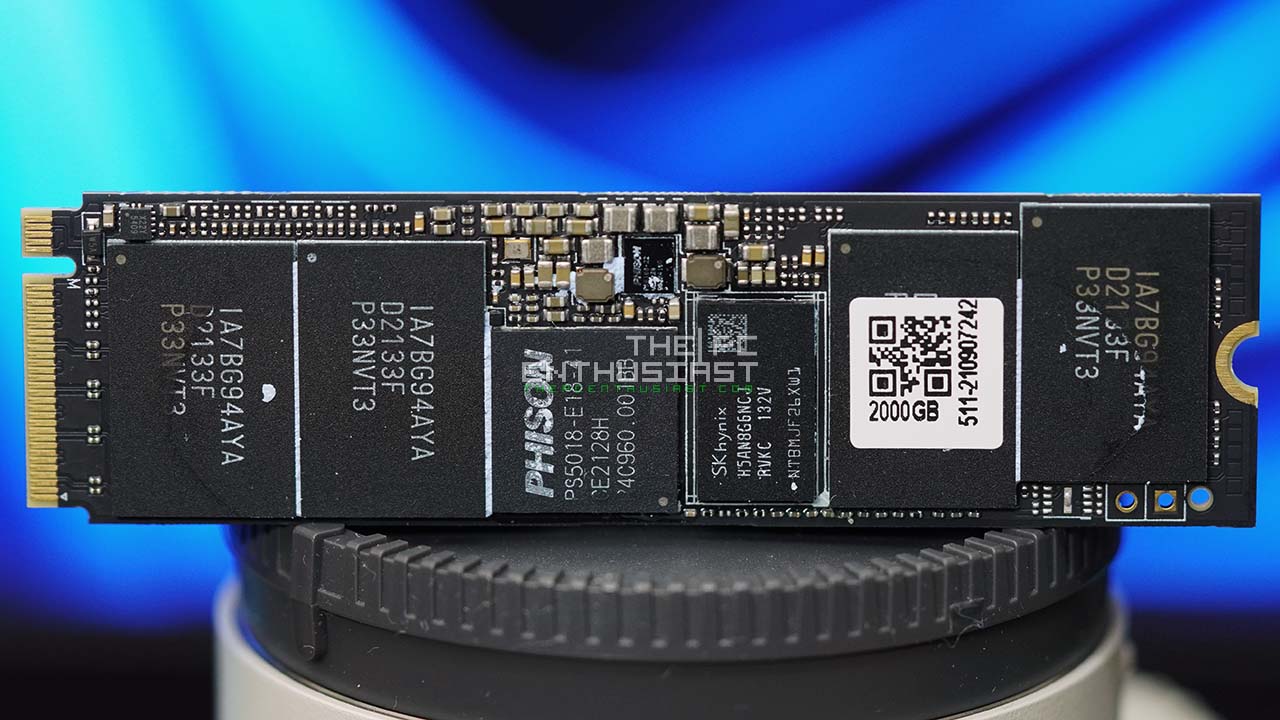
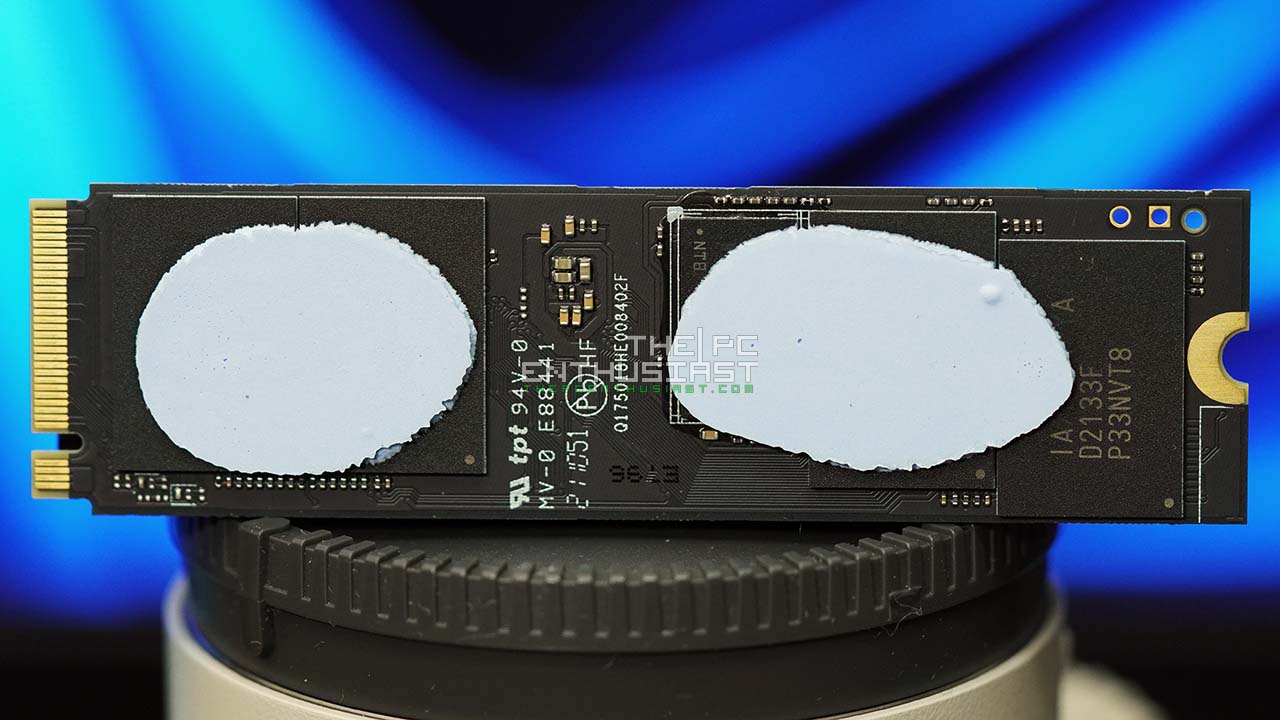
Again, MSI warns users not to disassemble the M480 Play. But for the purposes of this review, I have removed the heatsink to show you what’s under the hood. I have already tested the SSD before taking photos and dismantling it, just in case it gets damaged in the process. Luckily it still works after!
If you noticed the Phison E-18 controller is in the middle of the SSD’s PCB. And the NAND chips are on both sides. It’s an interesting layout, something that is uncommon among NVMe SSDs. But I think this was done on purpose. If I am not mistaken, this layout helps in heat dissipation with the E18 controller in the middle.

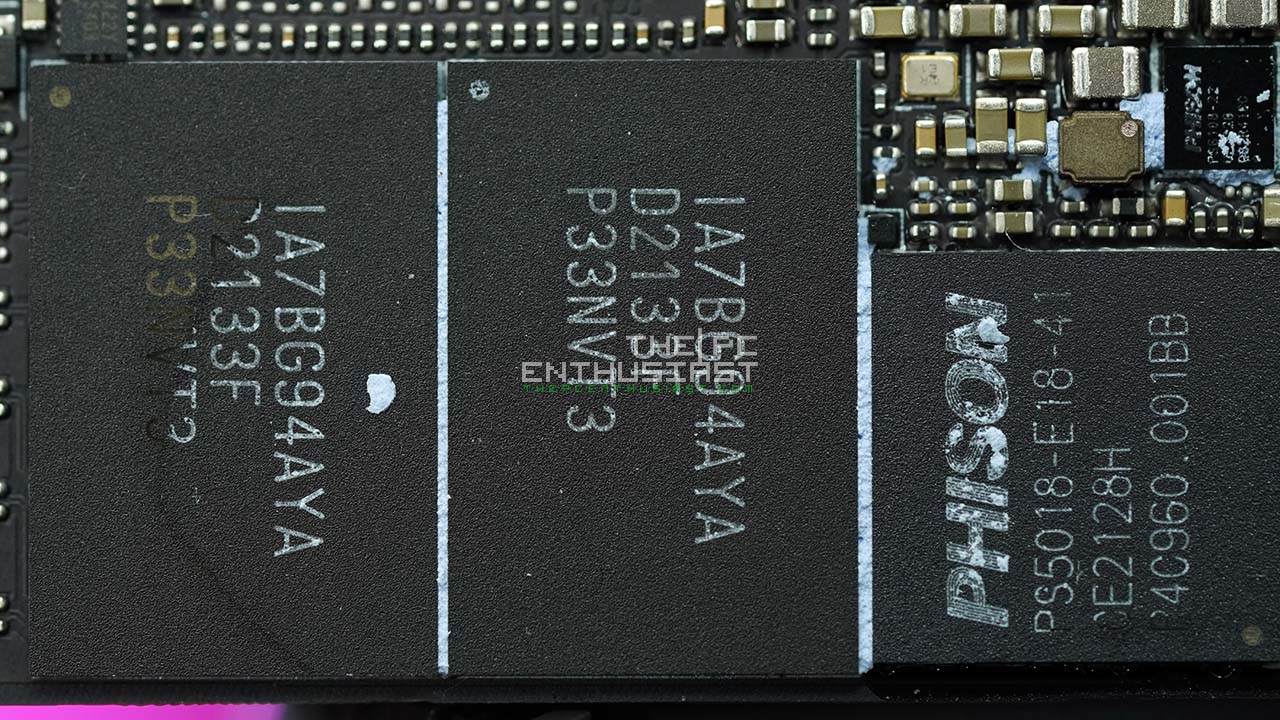
Above you can the Phison PS5018-E18 controller in the middle of the SSD. Right beside the controller is a SKhynix DDR4-2666 DRAM. There are two of these for a total of 2GB, the other one is at the back. The large chips, labeled IA7BG94AYA, you see on both sides are the Micron 176-layer 3D TLC NAND flash. There are eight in total, four on each side.
MSI claims that the newer M480 Play can achieve up to 7,00MB/s of sequential read speed and up to 6,800MB/s of sequential write speed. Let’s find out if this is true, or if we can at least get near those advertised speeds.
MSI Spatium M480 Play Specifications
| Capacity | 500GB | 1TB | 2TB | 4TB |
|---|---|---|---|---|
| Controller | ||||
| Flash Memory | ||||
| Dram Cache | 512MB DDR4 | 1GB DDR4 | 2GB DDR4 | 2GB DDR4 |
| Form Factor | ||||
| Interface | ||||
| Compatibility | ||||
| Dimensions | ||||
| Sequential Read Up To (MB/s) | 6500 | 7000 | 7000 | 7000 |
| Sequential Write Up To (MB/s) | 2850 | 5500 | 6800 | 6800 |
| Random Read 4KB Up To (IOPs) | 170000 | 350000 | 650000 | 650000 |
| Random Write 4KB Up To (IOPs) | 600000 | 700000 | 700000 | 700000 |
| Maximum Operating Power (W) | 6 | 6.6 | 8.2 | 9.7 |
| Idle Power PS3 (MW) | 10 | 14 | 22 | 50 |
| Low Power L1.2 (MW) | ||||
| Operating Temperatures | ||||
| Storage Temperatures | ||||
| Terabytes Written (TBW) | 350 | 700 | 1400 | 3000 |
| Mean Time Between Failure (MTBF) | ||||
| Limited Warranty | ||||
| Advanced Features | SMART (Self-Monitoring, Analysis and Reporting Technology) LDPC (Low Density Parity Check) ECC Algorithm End to End Data Path Protection APST (Autonomous Power State Transition) AES256/TCG OPAL2.0/Pyrite (Encryption, Data Security) |
|||
Check the latest pricing and availability: (#ad)
MSI Spatium M480 Play 1TB SSD is available on Amazon.com here.
MSI Spatium M480 Play 2TB SSD is available on Amazon.com here.
Test Setup

I tested the Spatium M480 Play 2TB capacity on an Intel Z690 system, powered by an Intel Core i7-12700K. The drive was installed on the first M.2 slot. It is the slot that is connected to the CPU, and the slot itself is located just below the CPU socket and right above the first PCIe x16 slot. Below are the rest of the system’s specifications:
| Operating System | Windows 10 Pro 64bit |
| Processor | Intel Core i7-12700K |
| Motherboard | Asus ROG Maximus Z690 Hero |
| Memory | Kingston Fury Beast DDR5 5200MHz 32GB |
| Graphics Card | MSI GeForce RTX 3080 Ti SUPRIM X |
MSI Spatium M480 PCIe 4.0 NVMe M.2 PLAY Benchmark Results
AJA Benchmark Results
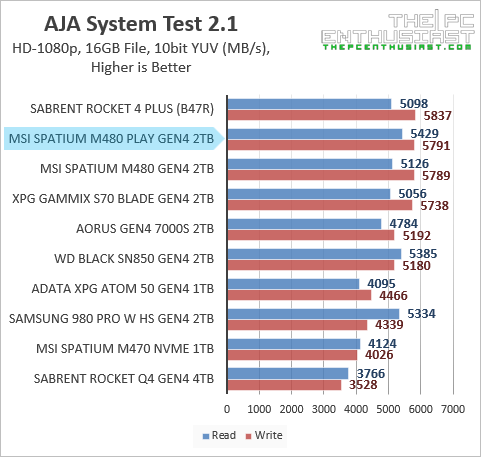
In the AJA System Test benchmark, the MSI Spatium M480 Play performed neck-and-neck with the Sabrent Rocket 4 Plus (B47R). The difference is just a few MB/s give or take, making their performance difference negligible. If you’re wondering why both SSDs performed similarly, that’s because both are similar on the inside as well.
Both the Spatium M480 Play and the newer version of the Rocket 4 Plus is using the same Phison E18 controller and Micron 176-layer 3D TLC IA7BG94AYA NAND flash chips. Both SSDs are basically identical, and the only difference is the M480 Play has a thicker heatsink than the Sabrent’s thin copper heat spreader. I’m not sure if they have the same configuration, like overprovisioning, etc. But generally speaking, they are of the same Phison E18-based SSD.
Let’s check out more benchmark results below.
AS SSD Benchmark Results

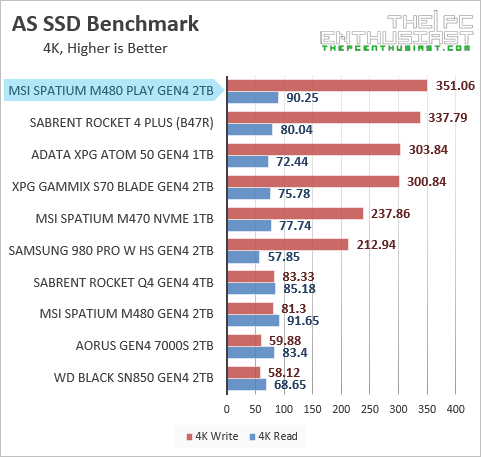
We can observe the same performance during the AS SSD benchmark tests. The Spatium M480 and Rocket 4 Plus perform similarly. Although, I noticed that the Rocket 4 Plus is a tiny bit slower when it comes to sequential read speed.
Only the XPG Gammix S70 Blade came close to both SSDs. The S70 is not the same SSD as the two. It uses an Innogrit IG5236 controller but uses the same B47R NAND chips from Micron.
ATTO Disk Benchmark Results
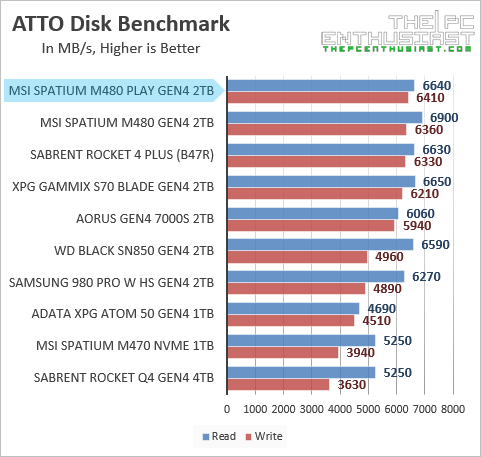
ATTO Disk benchmark is purely a sequential test and I was expecting that it would at least hit the 7,000MB/s mark with this benchmark test. Unfortunately, I only got around 6,640MB/s sequential read and around 6,410MB/s sequential write. Nevertheless, those numbers are very close to the advertised speeds.
I don’t expect that these drives would hit their advertised speeds because most of the time they don’t. And sometimes it also depends on the system used. But I do expect that they would at least get read/write speeds near or close to the advertised speeds.
CrystalDiskMark Benchmark Results

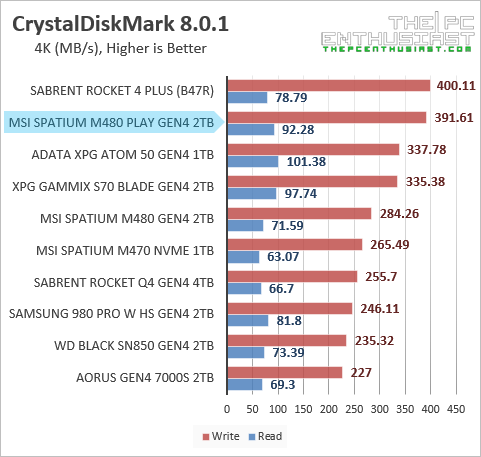
When I tested the Spatium M480 Play with the CrystalDiskMark benchmark, I was able to reach the advertised 7,000MB/s sequential read speed and 6,800MB/s sequential write speed. Both the M480 Play and the Sabrent Rocket 4 Plus performed similarly in this test as well. The M480 Play was just a tiny bit faster during the sequential test. Meanwhile the Rocket 4 Plus was a tiny bit faster during the 4K random test.
PCMark 10 Full System Drive Results
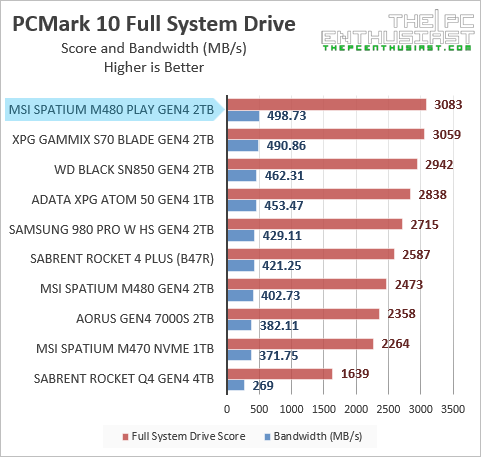
Last but not the least, I tested the Spatium M480 Play 2TB using the PCMark 10 Full System drive benchmark suite. It is an intensive test and takes about an hour (or more) to finish. The test uses a wide-ranging set of real-world traces from popular applications (Adobe Creative Suite, Microsoft Office), and common tasks to fully test the performance of modern drives.
In this test, the M480 Plus ended up at the top of the chart. It was performing faster than the Innogrit-based XPG S70 Blade SSD and it is faster than WD’s Black SN850, the company’s current flagship SSD. It’s even faster than the Samsung 980 PRO overall.
The only thing that is a head-scratcher for me is that the Sabrent Rocket 4 Plus (B47R) didn’t make it to the top of the chart. I was expecting that it would be at the top or near the M480 Play. But it ended up in the middle of the chart. Nevertheless, these are all fast Gen4 SSDs.
MSI Spatium M480 Play PCIe 4.0 SSD Review Conclusion
I was quite impressed with the Spatium M480 we reviewed before. And this time, the newer Spatium M480 Play is ever faster. Although not significantly faster. But it is clearly faster by a few MB/s. This is thanks to the new firmware and faster Micron NAND flash.
Will you be able to tell the difference during actual use, especially in gaming? Well not really. Perhaps when the PCIe 5.0 drives come out, we’ll be able to tell the difference in performance even without looking at benchmark results.
The MSI Spatium M480 Play is fully compatible with the PlayStation 5. If you have a PS5 and you’re looking for a fast SSD to expand you’re PS5’s capacity, the Spatium M480 Play would be a perfect fit. There’s a standard size that manufacturers need to follow so that their SSD would fit and work with the PS5. And the Spatium M480 Play’s heatsink is sufficient enough to keep its temperature at bay and prevent it from throttling.
I haven’t mentioned its pricing yet. The Spatium M480 Play 2TB capacity I tested here comes with an MSRP of $330 USD. So far I don’t see it listed on Amazon or Newegg yet. But the Spatium M480 with HS and M470 are already available, although they are not compatible with the PS5. At $330, it is a bit on the expensive side. But I do hope that its current retail price will be lower since the Sabrent Rocket 4 Plus with heatsink for PS5 retails for around $310 USD.
UPDATE: the 1TB and 2TB M480 Play are now available in the US. And they are currently selling way below their original MSRP. The 1TB capacity sells below $100, and the 2TB capacity sells below $200. Check the links below for their latest pricing and availability.
Finally…
At the end of the day, the MSI Spatium M480 Play is an even excellent and faster drive than the M480. It is powered by Phison’s E18 controller paired with Micron’s B47R 176-Layer 3D TLC NAND flash and new firmware. It is also backed by a 5-year limited warranty or up to 1400TBW for the 2TB capacity. Again, if the price is right, you simply can’t go wrong with this drive.
Check the latest pricing and availability: (#ad)
MSI Spatium M480 Play 1TB SSD is available on Amazon.com here.
MSI Spatium M480 Play 2TB SSD is available on Amazon.com here.



